The CDT Gear Guide: Class of 2017 Survey
In an effort to maximize the utility of the Continental Divide Trail Thru-hiker Survey, I have done a deep dive into the gear that hikers used on the trail this past year. The results detailed here should help to give an idea of what gear made hikers successful and what gear hikers realized was actually garbage and should have been left on the shelf.
I’ve organized the date as best I could, trying to give a comprehensive picture of what gear CDT thru-hikers are using. This post covers the MOST POPULAR GEAR (backpacks, shelters, sleeping bags, sleeping pads, water treatment, stoves, bear canisters), the BASE WEIGHTS of different categories of hikers and how they stack up to one another, the FAVORITE GEAR (same as “most popular”), SHOES, how much was SPENT ON GEAR, thru-hiker COMMENTS ON GEAR, and finally, a bit of gear ADVICE.
Despite my best efforts, I am sure there are things I missed or things you may want to know about the data, so if anything comes to mind, I would love to hear your thoughts in the form of a comment or email. Also, know that I made a good-faith effort to collect and as much data as I could, but that does not mean there’s anything scientific about this post. I did my best to make sure this accurately reflects the data collected from this year’s Continental Divide Trail class and to remove any obviously bad data.
That being said, I hope you enjoy the CDT Gear Guide brought to you by the CDT Class of 2017.
Note: A list of the different hiker categories and how they are identified can be found at the end of this post.
JUMP TO A SECTION

THE MOST POPULAR CDT GEAR
The survey results tell us what an “average” Continental Divide Trail hiker’s gear list was this past year. We’ll start where we left off in the survey and first review the MOST COMMONLY USED GEAR from this year’s CDT class.
Remember, this is the most commonly used gear – simply because something was the most used does not necessarily translate to it automatically being the “best” (or even good). Further down we look at what gear hikers DID NOT like, so it might be best to read through the entire post before you go crazy with your gear selection.
Note: All the gear in the charts below is listed in order of most common (at the top) to less common (at the bottom).
MOST POPULAR BACKPACK:
The ULA Circuit was the most popular pack for CDT thru-hikers this year. This 41 oz / 1.162 kg pack holds up to 35 lbs (16 kg) of gear with a 68-liter capacity. The satisfaction rating of this pack, according to hikers who used it, was 92%.





| BACKPACK | PRICE | WEIGHT | LITERS | REC MAX LOAD | ACCESS | SATISFACTION |
|---|---|---|---|---|---|---|
| ULA Circuit | $235 | 41 oz / 1.162 kg | 68 | 35 lbs / 16 kg | Top | 92% |
| Hyperlite Mountain Gear Southwest | $340 | 31.08 oz / 881 g | 55 | 40 lbs / 18 kg | Top | 100% |
| Osprey Exos | $220 | 38.4 oz / 1.089 kg | 58 | 40 lbs / 18 kg | Top | 88% |
| Zpacks Arc Blast | $325 | 21 oz / 595 g | 55 | 35 lbs / 16 kg | Top | 100% |
| Gossamer Gear Mariposa | $225 | 32.7 oz / 927 g | 60 | 35 lbs / 16 kg | Top | 100% |
MOST POPULAR SHELTER:
The Zpacks Hexamid was the most popular shelter for Continental Divide Trail thru-hikers last year. That being said, it was the only common tent without a 100% satisfaction rating.



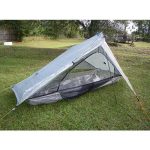

| TENT | PRICE | WEIGHT | PACKED | HEIGHT | FLOOR | DOORS | SATISFACTION |
|---|---|---|---|---|---|---|---|
| Zpacks Hexamid | $399 | 15.4 oz / 437 g | ? | 47 in / 119 cm | 16.3 ft² / 1.5 m² | 1 | 87% |
| Big Agnes Fly Creek HV UL2 | $390 | 32 oz / 879 g | 4 x 19 in / 10 x 48 cm | 40 in / 102 cm | 28 ft² / 2.6 m² | 1 | 100% |
| Tarptent Protrail | $225 | 26 oz / 740 g | 12 x 4 in / 30 x 10 cm | 45 in / 114 cm | 21 ft² / 1.9 m² | 1 | 100% |
| Zpacks Solplex Tent | $555 | 15.5 oz / 439 g | ? | 48 in / 122 cm | 18.75 ft² / 1.74 m² | 1 | 100% |
| Big Agnes Copper Spur HV UL 1 | $380 | 34 oz / 963 g | 4 x 16.5 in / 10 x 42 cm | 38 in / 97 cm | 20 ft² / 1.8 m² | 2 | 100% |
MOST POPULAR SLEEPING BAG:
The Western Mountaineering UltraLite was the most popular sleeping bag for Continental Divide Trail thru-hikers last year. This bag is available in three sizes and has continuous baffles with a full down collar.



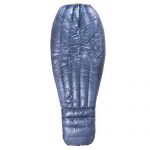

| SLEEPING BAG | PRICE | TEMP | WEIGHT | FILL | FILL WEIGHT | SATISFACTION |
|---|---|---|---|---|---|---|
| Western Mountaineering UltraLite | $500 | 20°F / -7°C | 29 oz / 822 g | 850-fill goose down | 16 oz / 453.6 g | 91% |
| Enlightened Equipment Revelation 20° | $285 | 20°F / -7°C | 20.2 oz / 572 g | 850-fill duck down | 13.63 oz / 386 g | 63% |
| Enlightened Equipment Enigma 20° | $290 | 20°F / -7°C | 18.91 oz / 536 g | 850-fill duck down | 13.09 oz / 371 g | 63% |
| Zpacks 20° Sleeping Bag | $415 | 20°F / -7°C | 20 oz / 568 g | 900-fill goose down | 13.7 oz / 388 g | 77% |
| Western Mountaineering Versalite | $575 | 10°F / -12°C | 31 oz / 879 g | 800-fill goose down | 20 oz / 450 g | 100% |
MOST POPULAR SLEEPING PAD:
For the second year in a row, the Therm-a-Rest NeoAir XLite was the most popular sleeping pad for Continental Divide Trail thru-hikers this year. In fact, the Therm-a-Rest brand pretty much dominated the entirety of the sleeping pads reported.





| SLEEPING PAD | PRICE | TYPE | WEIGHT | R-VALUE | PACKED | THICKNESS | SATISFACTION |
|---|---|---|---|---|---|---|---|
| Therm-a-Rest NeoAir XLite | $160 | Air pad | 12 oz / 350 g | 3.2 | 9 x 4 in / 23 x 10 cm | 2.5 in / 6.3 cm | 100% |
| Therm-a-Rest NeoAir XTherm | $200 | Air | 15 oz / 430 g | 5.7 | 9 x 4 in / 23 x 10 cm | 2.5 in / 6.3 cm | 100% |
| Therm-a-Rest Z Lite Sol | $45 | Foam | 14 oz / 410 g | 2.6 | 20 x 5 x 5.5 in / 51 x 13 x 14 cm | .75 in / 2 cm | 91% |
| Therm-a-Rest NeoAir XLite (Short) | $130 | Air | 8 oz / 227 g | 3.2 | 9 x 3.3 in / 23 x 9 cm | 2.5 in / 6.3 cm | 90% |
| Therm-a-Rest Z Lite Sol (Short) | $35 | Foam | 10 oz / 284 g | 2.6 | 20 x 4 x 5.5 in / 51 x 10 x 14 cm | .75 in / 2 cm | 100% |
MOST POPULAR STOVE:
The MSR PocketRocket 2 was the most popular stove for Continental Divide Trail thru-hikers last year. However, 28% of respondents said they went stoveless on the trail (something to keep in mind).





| STOVE | PRICE | TYPE | WEIGHT | DIMENSIONS | INTEGRATED POT | SIMMER CONTROL | SATISFACTION |
|---|---|---|---|---|---|---|---|
| MSR PocketRocket 2 | $45 | Canister | 2.6 oz / 74 g | 7.25 x 5 x 4 in / 18 x 13 x 10 cm | No | Yes | 100% |
| MSR MicroRocket | Discontinued | Canister | 2.6 oz / 74 g | 3 x 2 x 2 in / 7.6 x 5 x 5 cm | No | Yes | 100% |
| Jetboil Flash | $100 | Canister | 15.25 oz / 432 g | 7.1 x 4.5 in | Yes | No | 100% |
| Jetboil MinoMo | $135 | Canister | 14 oz / 397 g | 5 x 6 in | Yes | Yes | 100% |
MOST POPULAR WATER TREATMENT:
The Sawyer Squeeze was the most popular water treatment system for CDT thru-hikers this year (again). Remember, you do not need a treatment for viruses on the CDT (at least that’s the word in the mountains).





| WATER TREATMENT | PRICE | WEIGHT | TYPE | MEDIUM | REMOVES | DIMENSIONS | SATISFACTION |
|---|---|---|---|---|---|---|---|
| Sawyer Squeeze | $40 | 3 oz / 85 g | Squeeze/Straw | Hollow fiber | Protozoa and bacteria | 5 x 2 in | 95% |
| Aquamira | $15 | 3 oz / 85 g | Drops | Chlorine dioxide | Protozoa bacteria, and viruses | N/A | 100% |
| Sawyer MINI | $25 | 2 oz / 57 g | Squeeze/Straw | Hollow fiber | Protozoa and bacteria | 1 x 5 in / 2.5 x 13 cm | 100% |
| Katadyn BeFree | $45 | 2.3 oz / 65 g | Bottle | Hollow fiber | Protozoa and bacteria | 11.3 x 3.5 x 2.8 in / 29 x 9 x 7 cm | 66% |
THE MOST POPULAR GEAR LIST
Knowing what we know now, we can begin to assemble a CDT gear list for this year’s CDT class. Here’s what we’ve got so far:
| ITEM | BRAND/NAME | PRICE | WEIGHT | DESCRIPTION | SATISFACTION |
|---|---|---|---|---|---|
| BACKPACK | ULA Circuit | $235 | 41 oz / 1.162 kg | A 68-liter, top-loading pack built to carry up to 35 lbs / 16 kg. | 92% |
| SHELTER | Zpacks Hexamid | $399 | 15.4 oz / 437 g | A lightweight, one-person, side-entry tent, that required one trekking pole and eight stakes. | 87% |
| SLEEPING BAG | Western Mountaineering UltraLite | $500 | 29 oz / 822 g | A 20°F / -7°C, 850-fill goose down sleeping bag. | 91% |
| SLEEPING PAD | Therm-a-Rest NeoAir XLite | $160 | 12 oz / 350 g | A lightweight, inflatable, three-season pad – R-value, 3.2. | 100% |
| STOVE | MSR PocketRocket 2 | $45 | 2.6 oz / 74 g | A compact canister stove with simmer control. | 100% |
| WATER TREATMENT | Sawyer Squeeze | $40 | 3 oz / 85 g | An adaptable hollow-fiber filter that removes protozoa, bacteria, and floaties. | 95% |
The cumulative retail purchase price of this gear list? $1,379. Yes, being a homeless wanderer of the mountains can be a lot more expensive than most people would imagine. Now, let’s look at something that nobody but hikers, and more specifically thru-hikers, really cares about: how much all this stuff weighs.
- BIG THREE (PACK+SHELTER+SLEEPING BAG): 5 lbs 5.4 oz / 2.42 kg
- BIG FOUR (BIG 3+SLEEPING PAD): 6 lbs 1.4 oz / 2.76 kg
- EVERYTHING: 6 lbs 7 oz / 2.92 kg
This number is still missing a lot of gear (rain gear, warm jacket, headlamp, extra clothing, snow gear, and whatever else people throw in their packs). However, it only gets us halfway to the AVERAGE STARTING BASE WEIGHT (that is, pack’s weight not including consumables such as food, water, and your poop paper) of this year’s thru-hikers: 13.91 lbs / 6.31 kg.
Let’s take a closer look at hiker base weight now, shall we?
This is interesting to see, particularly when compared to the same data on PCT hikers. The relatively low starting base weights and the very small change in base weight over the course of the trail speak to the fact that 92% of CDT thru-hikers this year had already completed a long-distance hiking trail.
Basically, most CDT thru-hikers have a pretty good idea of what they’re doing.
However, it’s still interesting to note that hikers who did not complete the CDT had higher base weights than those who did. Having a lighter pack doesn’t mean that you’ll finish the trail, but it certainly doesn’t seem to hurt your chances. That being said, it could be a case of more experienced hikers having lighter packs and because of their experience (not necessarily their pack weight), they’re more likely to complete the trail.
So let’s take a look at how base weights compare between people who were thru-hiking their first long-distance trail and those who had already done a long-distance thru-hike.
So yes, it appears that those hikers who have completed another long-distance hike recognize the value of trying to keep their base weights down. This does NOT mean that you have to have a crazy sub-five-pound (2.3 kg) base weight to finish your thru-hike. No, you don’t even need to have a sub-ten-pound (4.6 kg) base weight. What you need to do is not bring things you don’t need (the cheapest and most effective way to cut your base weight).

Yes, plenty of people can have happy and successful thru-hikes with all ultralight gear. However, people can also have happy and successful thru-hikes with packs much heavier than the arbitrary “average” we’ve managed to arrive at here. Gear selection is a personal issue, and ultimately, if you’re happy to carry something and/or it improves the quality of your hike, then nobody has the right to tell you that you shouldn’t have it.
That being said, if the Continental Divide Trail is going to be your first stab at a long-distance hike and you fall into the camp of “I have little/no idea what I’m doing/getting myself into”, then there are, of course, strategies to help mitigate your risk of failing to go the distance. One of the best resources reported by this year’s CDT class was former thru-hikers. Well, it turns out that this year’s class has become “former thru-hikers” and a lot of the gear comments are instructing you, future hiker of the CDT, to think long and hard about what gear you want to bring.
Take some time to think about what you NEED on the trail; not what you want, what you need. Don’t say I didn’t try to warn you when you decide to bring extra weight and then end up sending everything home (because some of you will ignore this advice and bring a bunch of unnecessary gear, and if you don’t then I’ve done my job).
THE FAVORITE CDT GEAR
We’ve covered the most common gear from the Continental Divide Trail this year, but that doesn’t necessarily tell us what gear worked best (or didn’t work at all). That’s why I asked hikers whether they were happy with their gear’s performance. No point in doing what everyone else is doing if they’re all doing it wrong, right?
NOTES ON THE DATA:
- I only identified a specific piece of gear as a “favorite” if at least 5% of the hikers in the sample used it (e.g. if four people used Pack X and they all said they liked it, it isn’t fair to just say, without acknowledging the size of the sample, that 100% of hikers liked Pack X). Got it? Good.
- All the weight (and for backpacks, capacity) for all the products below are for the product in a size medium (backpacks) or regular (sleeping bags and pads) unless otherwise noted.
- Some items that missed the 5% mark were liked by all or a large percentage of the hikers who used them. I feel these items still deserve a mention, so I have denoted them with either HM or Honorable mention.
- Some items were very much disliked by hikers (relative to other items) and I have denoted these with DM or Dishonorable mention.
FAVORITE BACKPACK:
The Hyperlite Mountain Gear Southwest was the favorite backpack of CDT thru-hikers this year. 100% of hikers with this pack said they were happy with it (I used it on the CDT this year and I’m one of these hikers as well). Read my detailed review of it here.




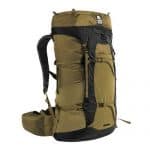
| BACKPACK | PRICE | WEIGHT | LITERS | REC MAX LOAD | ACCESS | SATISFACTION |
|---|---|---|---|---|---|---|
| Hyperlite Mountain Gear Southwest | $340 | 31.08 oz / 881 g | 55 | 40 lbs / 18 kg | Top | 100% |
| Hyperlite Mountain Gear Windrider | $340 | 31.08 oz / 881 g | 55 | 40 lbs / 18 kg | Top | 100% |
| Zpacks Arc Blast | $325 | 21 oz / 595 g | 55 | 35 lbs / 16 kg | Top | 100% |
| Gossamer Gear Mariposa | $215 | 32.7 oz / 927 g | 60 | 35 lbs / 15.88 kg | Top | 100% |
| ULA Circuit | $235 | 41 oz / 1.162 kg | 68 | 35 lbs / 16 kg | Top | 92% |
FAVORITE SHELTER:
The Big Agnes Fly Creek HV UL2 took the top spot in the shelter category. It’s a 1-door, single-vestibule, semi-freestanding tent that weighs 32 oz / 879 g. It also comes in a more lightweight version (5 oz / 142 g less), the Fly Creek HV2 Platinum.





| SHELTER | PRICE | WEIGHT | PACKED | HEIGHT | FLOOR | DOORS | SATISFACTION |
|---|---|---|---|---|---|---|---|
| Big Agnes Fly Creek HV UL2 | $390 | 32 oz / 879 g | 4 x 19 in / 10 x 48 cm | 40 in / 102 cm | 28 ft² / 2.6 m² | 1 | 100% |
| Tarptent Protrail | $225 | 26 oz / 740 g | 12 x 4 in / 30 x 10 cm | 45 in / 114 cm | 21 ft² / 1.9 m² | 1 | 100% |
| Zpacks Solplex Tent | $555 | 15.5 oz / 439 g | ? | 48 in / 122 cm | 18.75 ft² / 1.74 m² | 1 | 100% |
| Big Agnes Copper Spur HV UL 1 | $380 | 34 oz / 963 g | 4 x 16.5 in / 10 x 42 cm | 38 in / 97 cm | 20 ft² / 1.8 m² | 2 | 100% |
| Zpacks Hexamid | $399 | 15.4 oz / 437 g | ? | 47 in / 119 cm | 16.3 ft² / 1.5 m² | 1 | 87% |
FAVORITE SLEEPING BAG:
The Western Mountaineering Versalite was the favorite sleeping bag for Continental Divide Trail thru-hikers this year. It’s rated down to 10°F / -12°C and weighs 32 oz / 910 g (filled with 20 oz / 567 g 850-fill goose down).





| SLEEPING BAG | PRICE | TEMP | WEIGHT | FILL | FILL WEIGHT | SATISFACTION |
|---|---|---|---|---|---|---|
| Western Mountaineering Versalite | $575 | 10°F / -12°C | 31 oz / 879 g | 800-fill duck down | 15.9 oz / 450 g | 100% |
| Western Mountaineering UltraLite | $500 | 20°F / -7°C | 29 oz / 822 g | 850-fill goose down | 16 oz / 453.6 g | 91% |
| Zpacks 20° Sleeping Bag | $415 | 20°F / -7°C | 20 oz / 568 g | 900-fill goose down | 13.7 oz / 388 g | 77% |
| Enlightened Equipment Revelation 20° | $285 | 20°F / -7°C | 20.2 oz / 572 g | 850-fill duck down | 13.63 oz / 386 g | 63% |
| Enlightened Equipment Enigma 20° | $290 | 20°F / -7°C | 18.91 oz / 536 g | 850-fill duck down | 13.09 oz / 371 g | 63% |
FAVORITE SLEEPING PAD:
For the second year in a row, the Therm-a-Rest NeoAir XLite was the most popular sleeping pad for Continental Divide Trail thru-hikers this year. In fact, the Therm-a-Rest brand pretty much dominated the entirety of the sleeping pads reported.





| SLEEPING PAD | PRICE | TYPE | WEIGHT | R-VALUE | PACKED | THICKNESS | SATISFACTION |
|---|---|---|---|---|---|---|---|
| Therm-a-Rest NeoAir XLite | $160 | Air pad | 12 oz / 350 g | 3.2 | 9 x 4 in / 23 x 10 cm | 2.5 in / 6.3 cm | 100% |
| Therm-a-Rest NeoAir XTherm | $200 | Air | 15 oz / 430 g | 5.7 | 9 x 4 in / 23 x 10 cm | 2.5 in / 6.3 cm | 100% |
| Therm-a-Rest Z Lite Sol (Short) | $35 | Foam | 10 oz / 284 g | 2.6 | 20 x 4 x 5.5 in / 51 x 10 x 14 cm | .75 in / 2 cm | 100% |
| Therm-a-Rest Z Lite Sol | $45 | Foam | 14 oz / 410 g | 2.6 | 20 x 5 x 5.5 in / 51 x 13 x 14 cm | .75 in / 2 cm | 91% |
| Therm-a-Rest NeoAir XLite (Short) | $130 | Air | 8 oz / 227 g | 3.2 | 9 x 3.3 in / 23 x 9 cm | 2.5 in / 6.3 cm | 90% |
FAVORITE STOVES, WATER TREATMENT, AND SHOES
FAVORITE STOVES
- MSR PocketRocket 2 (100%)
- MST MicroRocket (100%)
- Jetboil Flash (100%)
- Jetboil MinoMo (100%)
FAVORITE WATER TREATMENT
- Aquamira (100%)
- Bleach (100%)
- Aquamira (100%)
- Sawyer MINI (100%)
This year, I’ve done a bit of a deeper dive into SHOES. “How many shoes am I going to use on the CDT?” is a question a lot of hikers have before starting their hikes, and it’s also a question that cannot be accurately answered before finishing a hike. Even if you knew for certain that each pair of your shoes would last you 775 mi / 1,250 km, buying yourself four pair of shoes at the start of the hike would be a risky decision – what if the shoes aren’t as comfortable as you thought? What if your feet swell? What if you die?
Remember, you can buy shoes using this thing called the internet and have them mailed ahead on the trail (to a post office, hotel, local outfitter, trail angel, etc.) once you know that you’re going to need a new pair. And if you encounter an emergency situation, you can always buy locally or simply wait around for your shoes to show up in the mail.
But let’s return to “how many shoes will I use on the CDT.” The average number of pairs used by FINISHERS was 4.39 (σ = 1.6). But what about shoe-specific numbers? Good question. Here are the average number of pairs used by FINISHERS broken down by brand.
PAIRS USED PER BRAND:
- Merrell: 3.3 pairs
- Altra: 4 pairs
- Brooks: 4 pairs
- Salomon: 4.17 pairs
- La Sportiva: 4.8 pairs
Note: 45% of thru-hikers who finished the CDT were wearing Altras.
MOST POPULAR SHOE:
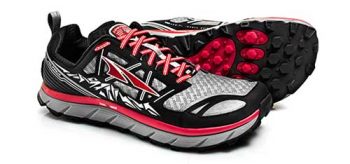
WHERE TO INVEST
Let’s now look at where this year’s class spent their AVERAGE OF $947 (σ = $682) on gear before beginning their thru-hikes. Here, we’ll also look at the average temperature rating of hiker sleeping bags and how big everyone’s packs were.
As a bonus, I’ve included a look at how these numbers differ between hikers who finished and those who did not finish.
- THRU – AVERAGE AMOUNT SPENT ON GEAR | $958 (σ = $680)
- THRU (ON FIRST THRU-HIKE) – AVERAGE AMOUNT SPENT ON GEAR | $1,500 (σ = $913)
- THRU (NOT ON FIRST THRU-HIKE) – AVERAGE AMOUNT SPENT ON GEAR |$885 (σ = $630)

- FINISH – AVERAGE AMOUNT SPENT ON GEAR | $1,001 (σ = $762)
- NOFINISH – AVERAGE AMOUNT SPENT ON GEAR |$829 (σ = $580)
- THRU – AVERAGE SLEEPING BAG TEMPERATURE RATING | 17.3°F / -8.2°C
- FINISH – AVERAGE SLEEPING BAG TEMPERATURE RATING | 16.9°F / -8.4°C
- NOFINISH – AVERAGE SLEEPING BAG TEMPERATURE RATING | 19.6°F / -6.9°C
- THRU – AVERAGE BACKPACK SIZE | 50 L (σ = 10.3)
- FINISH – AVERAGE BACKPACK SIZE | 47 L (σ = 10)
- NOFINISH – AVERAGE BACKPACK SIZE | 53 L (σ = 10.4)
CDT THRU-HIKER GEAR ADVICE
Hiker comments on gear can be dangerous when looked at individually because like so many things on a thru-hike, what gear you bring (and what gear you ultimately love/hate) is a very personal decision. With this in mind, here is a selection of HIKER GEAR ADVICE:
- Skied the San Juans – very fun, and potentially a way to do it!
- Your pack will ALWAYS be too heavy, regardless of your base weight, it will still feel like shit when you leave town. It’s relative.
- If you get butt chaffe you can tie a bandana to the back loop of pants or shorts and pull it between your butt cheeks. It’s the only effective way I’ve found to prevent it.
- Don’t pack your fears.
- Would bring an ultralight fishing pole if I did it again.
CDT Survey Collection
Affiliate Disclosure: This page may contain affiliate links, which means I may receive small commissions for purchases made via these links at no additional cost to you. This helps pay the bills and keep the site up and running. Thank you for your support!
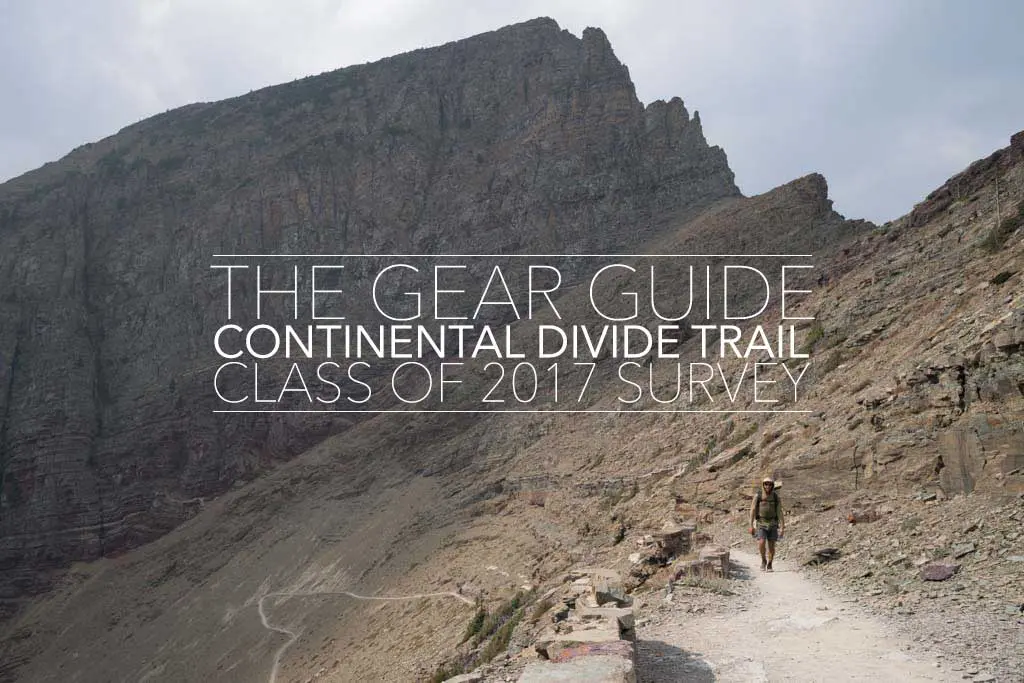
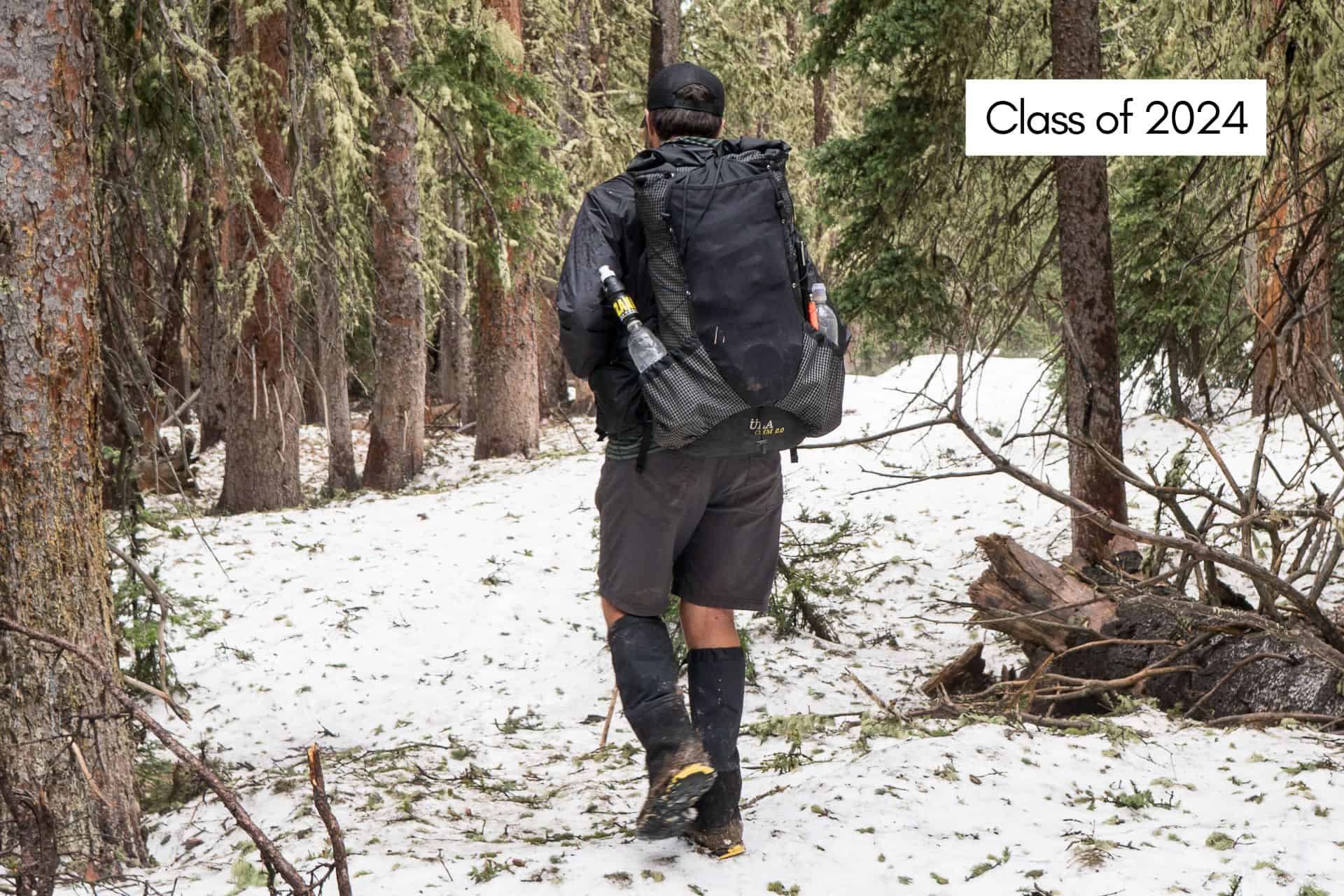

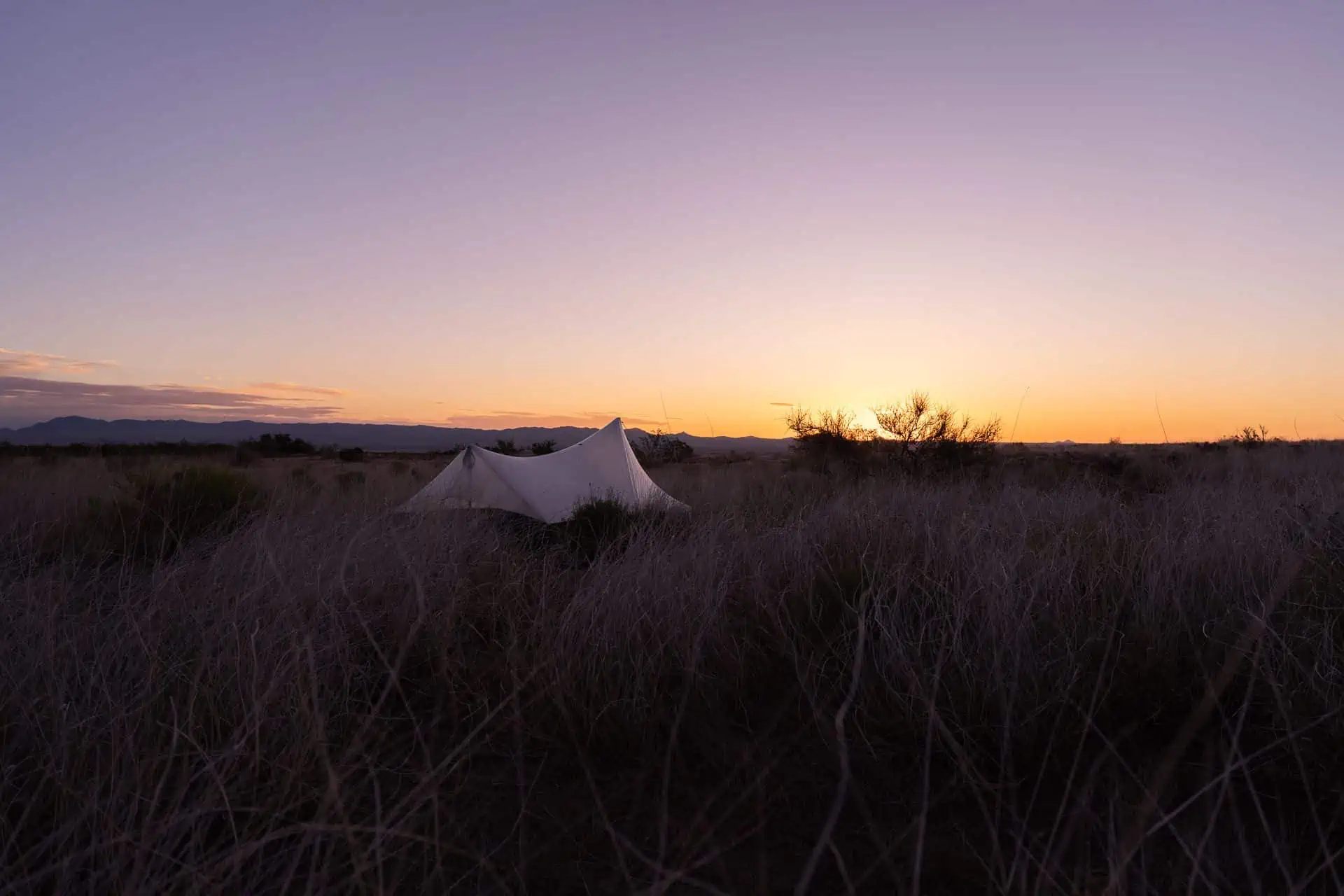


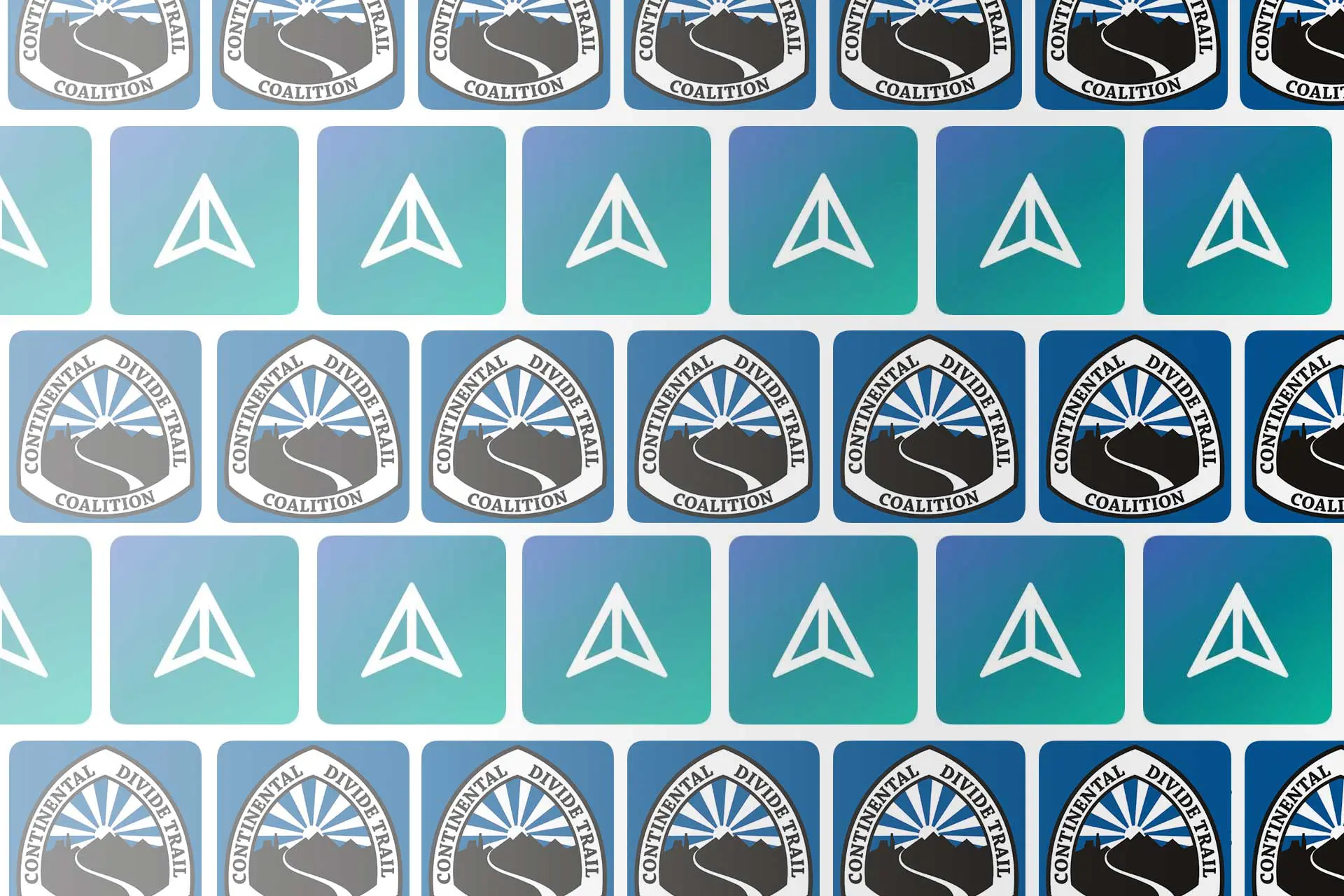
In the Uk we have a ‘comfort’ ‘limit’ and ‘extreeme’ rating on the sleeping bags – not sure if it the same in the US, just trying to work out how the average bag in the survey (-7 degrees) comapres to the Uk ratings and therefore what limit i need to go for…. A lot of Uk bags are ‘limit -7 and ‘comfort’ -1…… I guess what im trying to say is: compared to the PCT, does the CDT get much colder?
We have no fixed standards for sleeping bag temps in the US. Every company is different.
As far as PCT vs CDT, it really depends on the time of year and where you are. A case could be made for each being colder than the other.
I’m finding this so useful. I’m trying to decide if a tyvex groundsheet is necessary, I wonder if there was any feedback on those who’s used a ground sheet and those who didn’t (particularly with the protrail)
I’ll be sure to ask about this next year! Starting with a groundsheet and then ditching it if you don’t like it might be the best option here.
Was there any info on what caused the dissatisfaction with the Hexamid?
Unfortunately, no. Didn’t go into that much detail on the gear.
Shame. Would’ve been great to know if it was “I didn’t like personally and wanted more space” or “wasn’t the right kind of shelter for the environment you encounter on the CDT” kind of an issue as I’m thinking of possibly using it on my future CDT attempt.
I guess you’ll have to let us know.